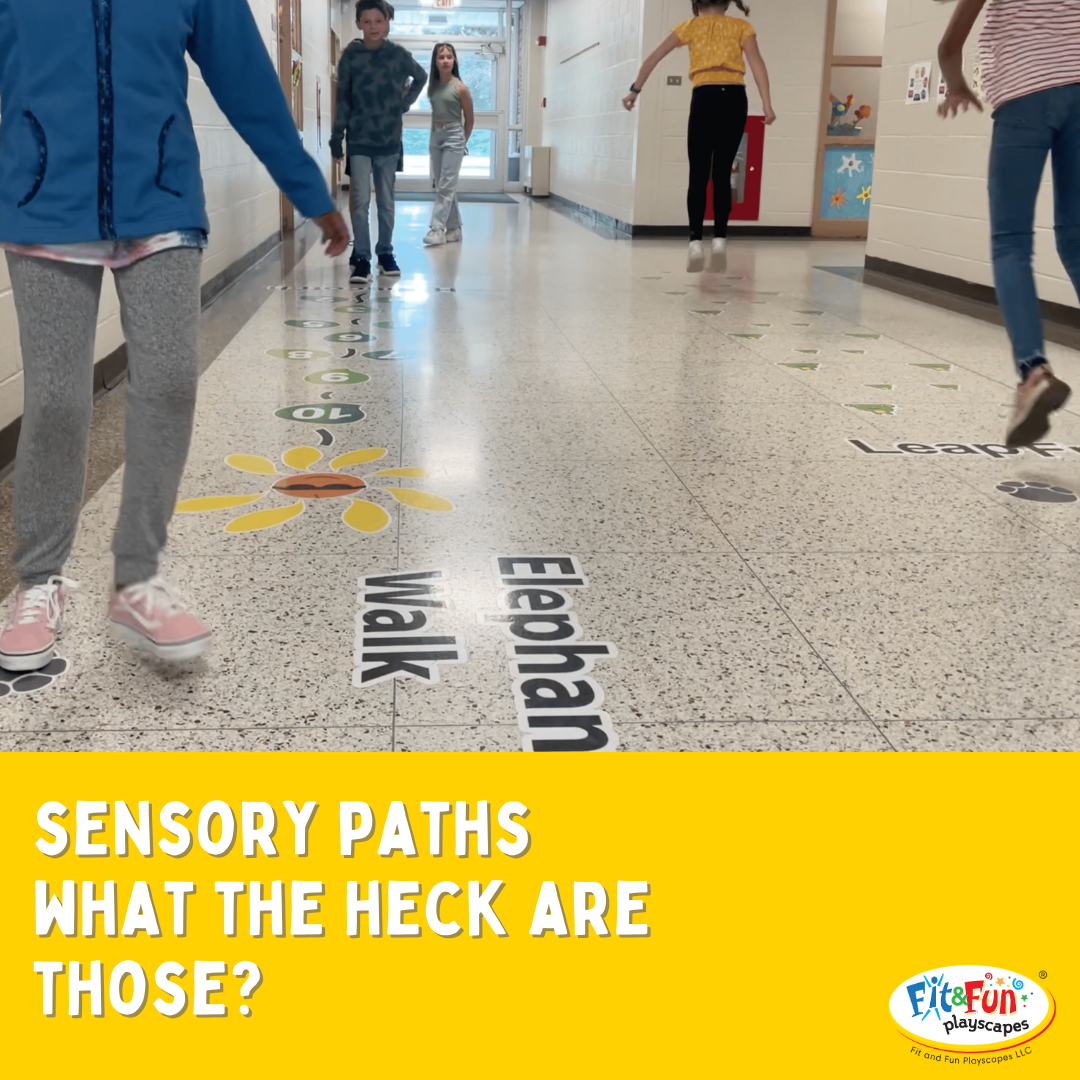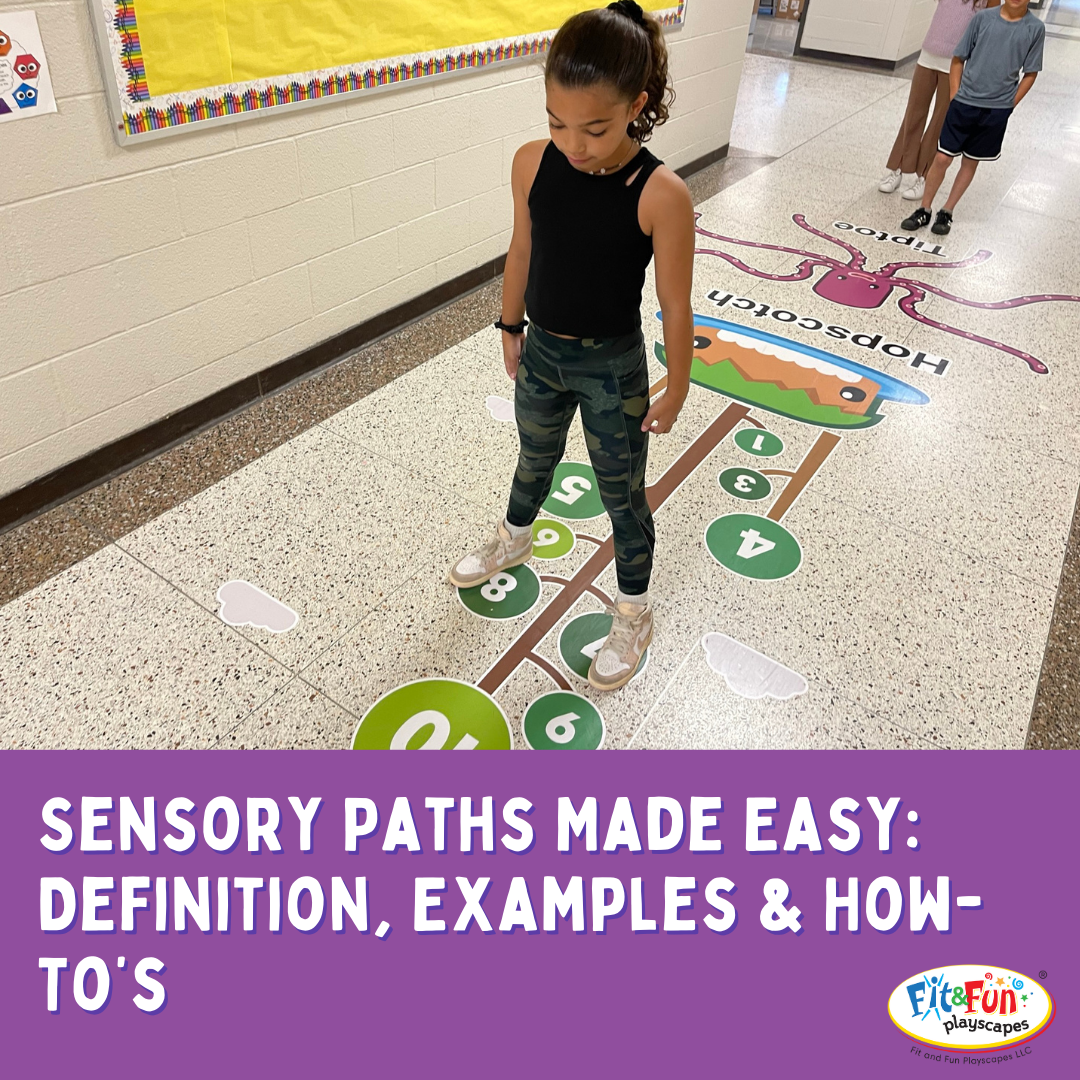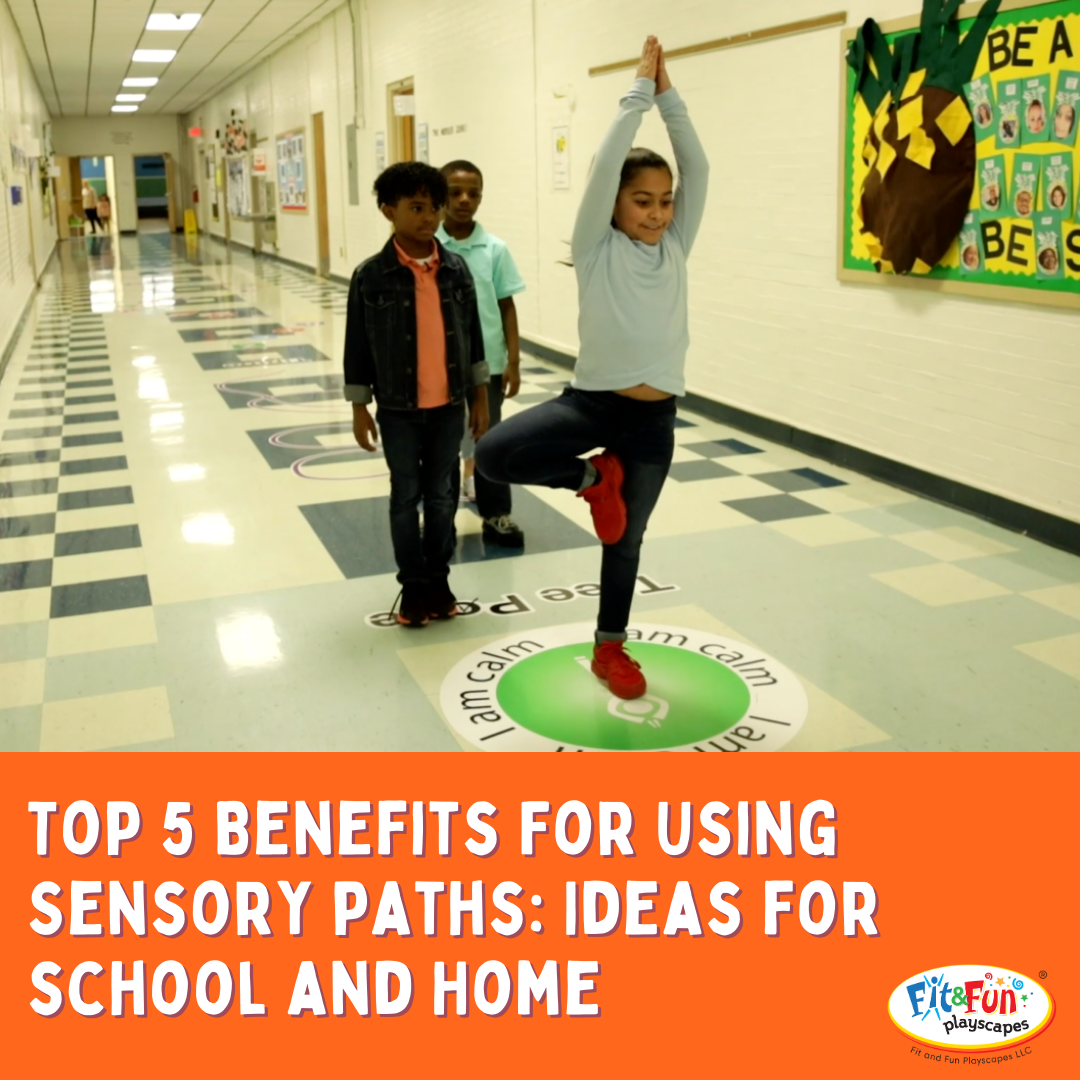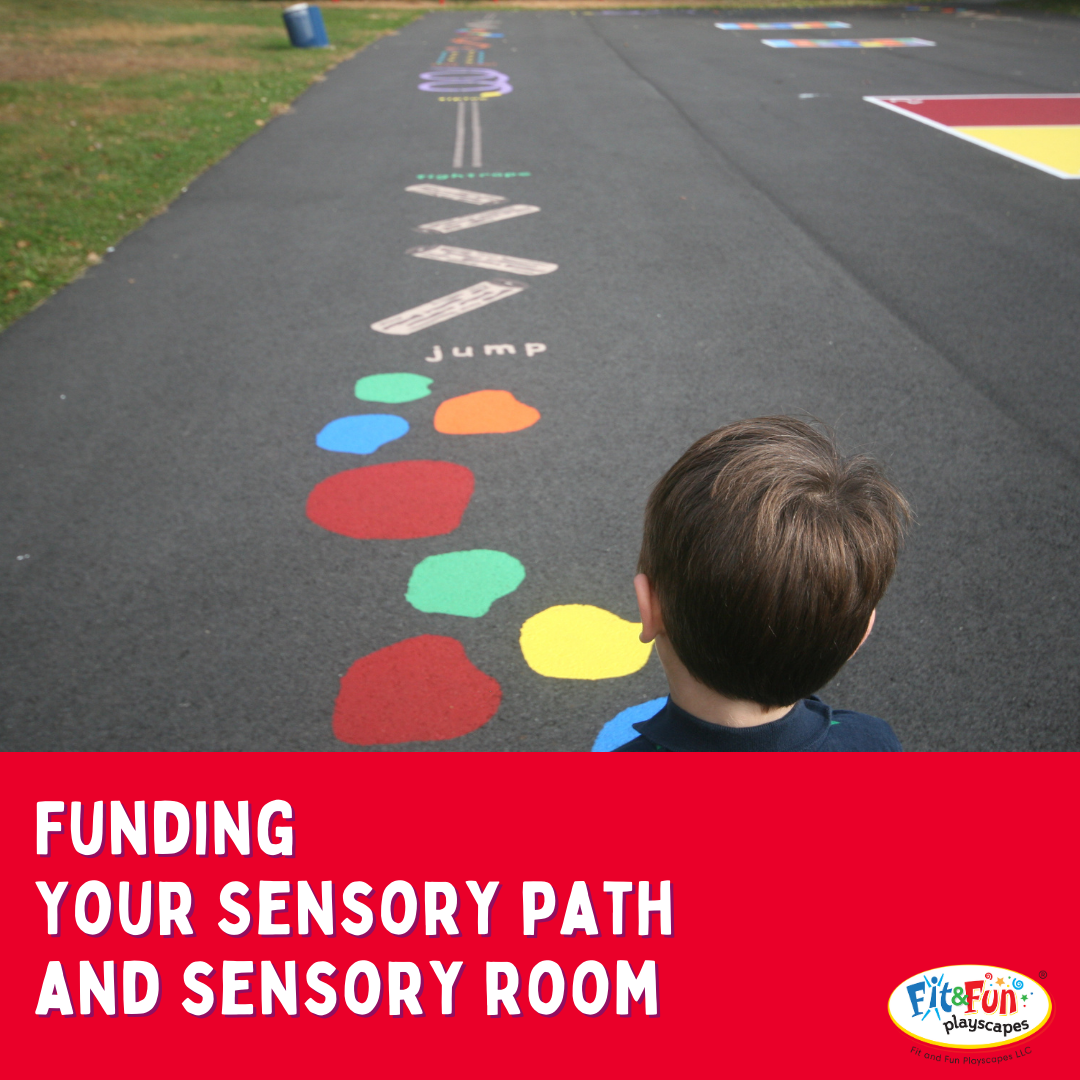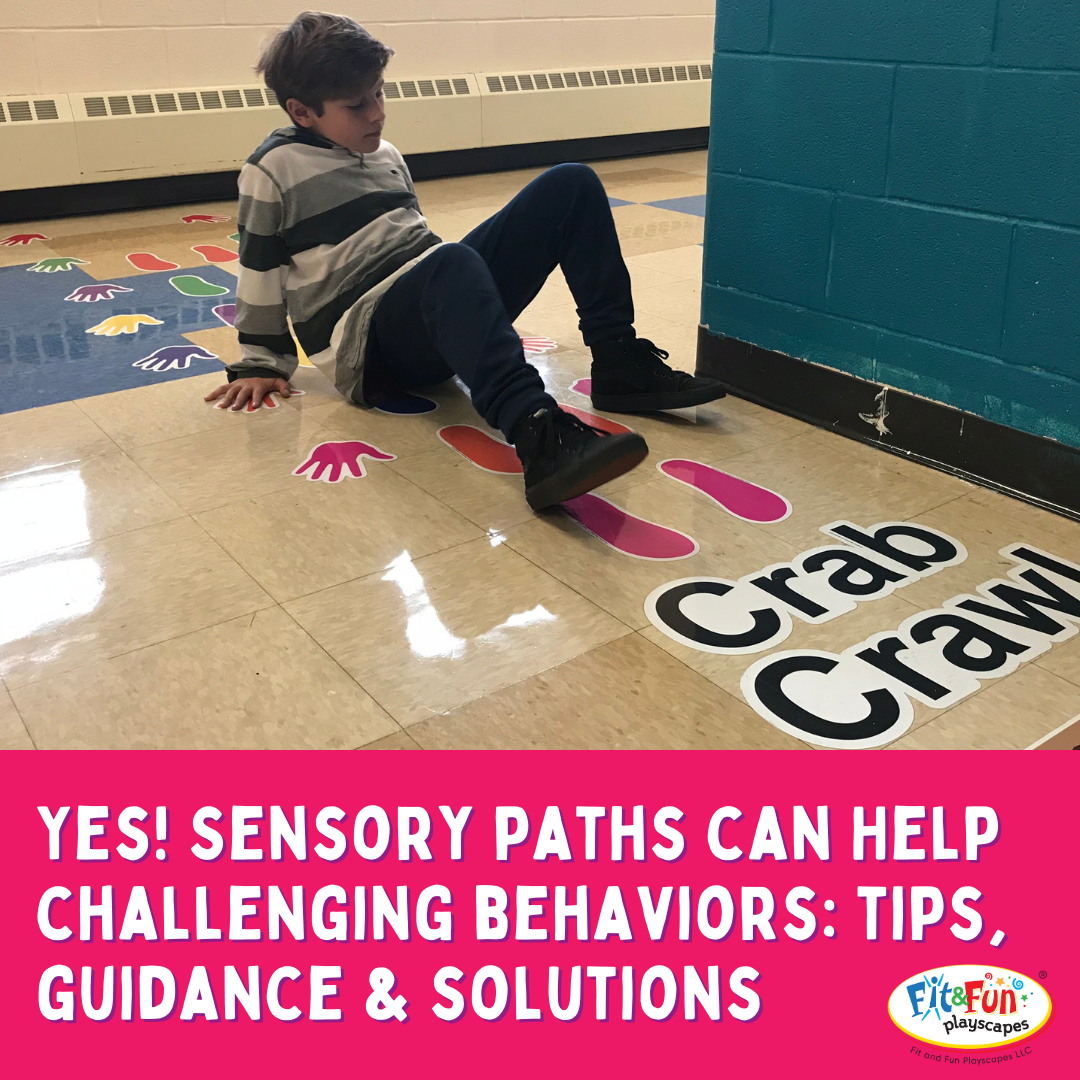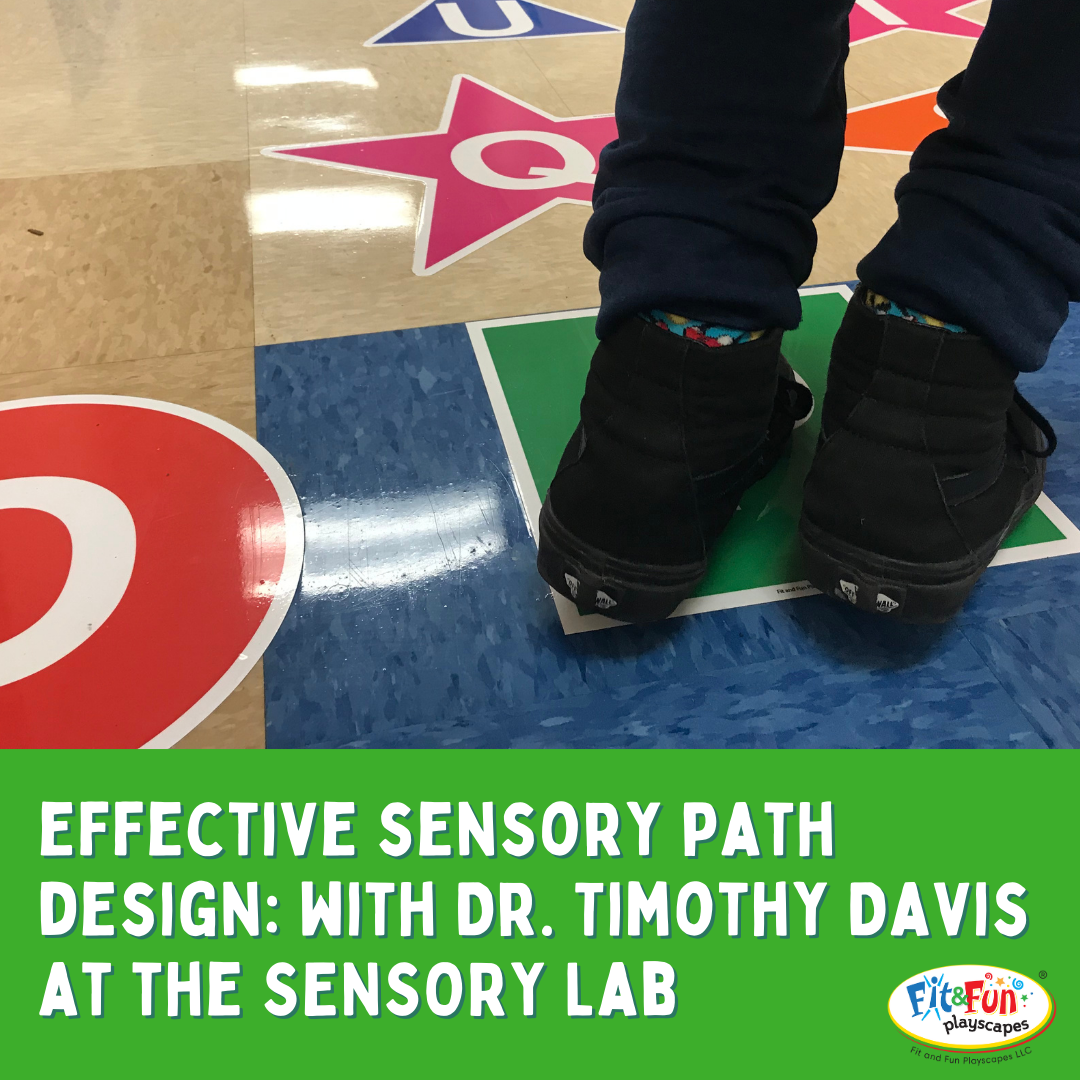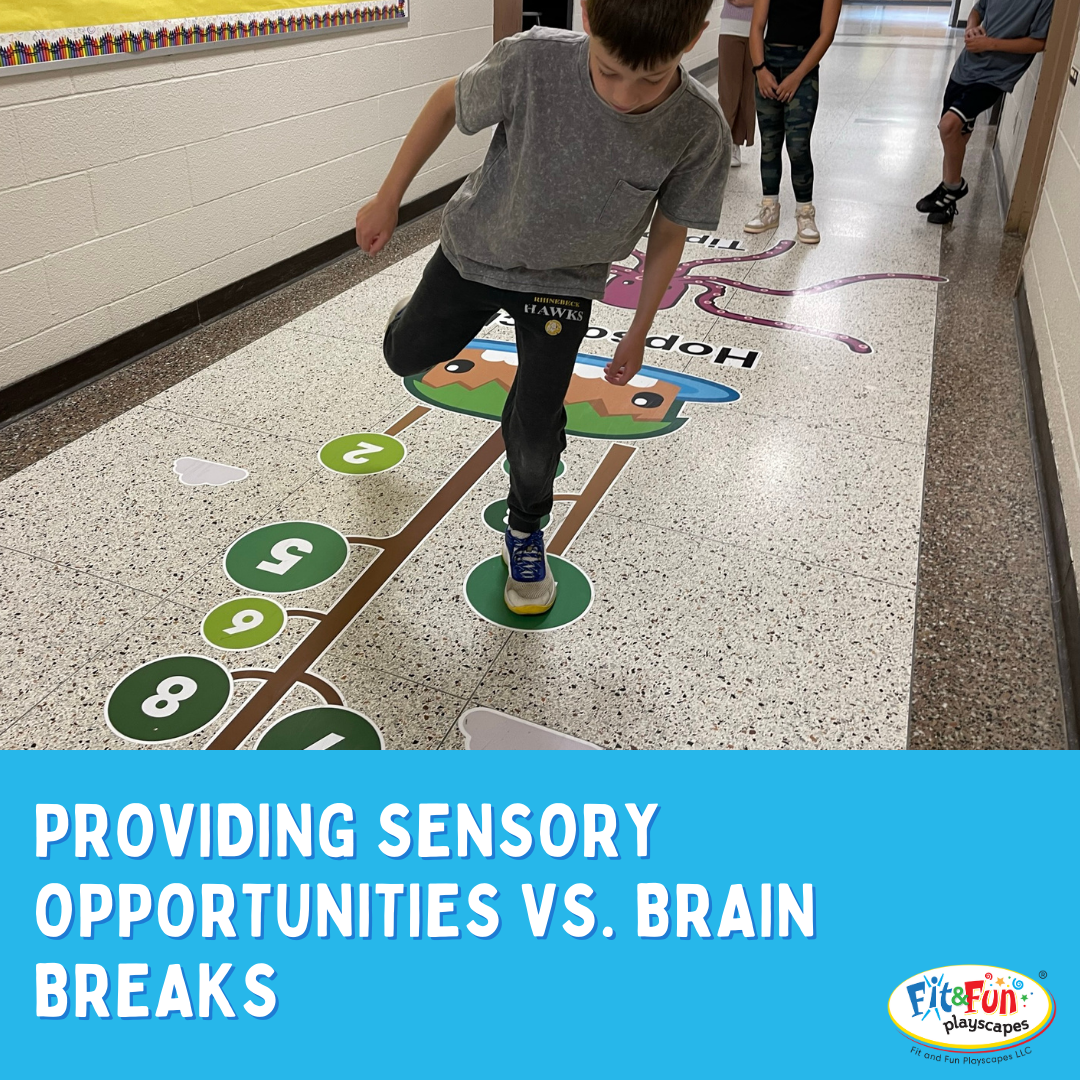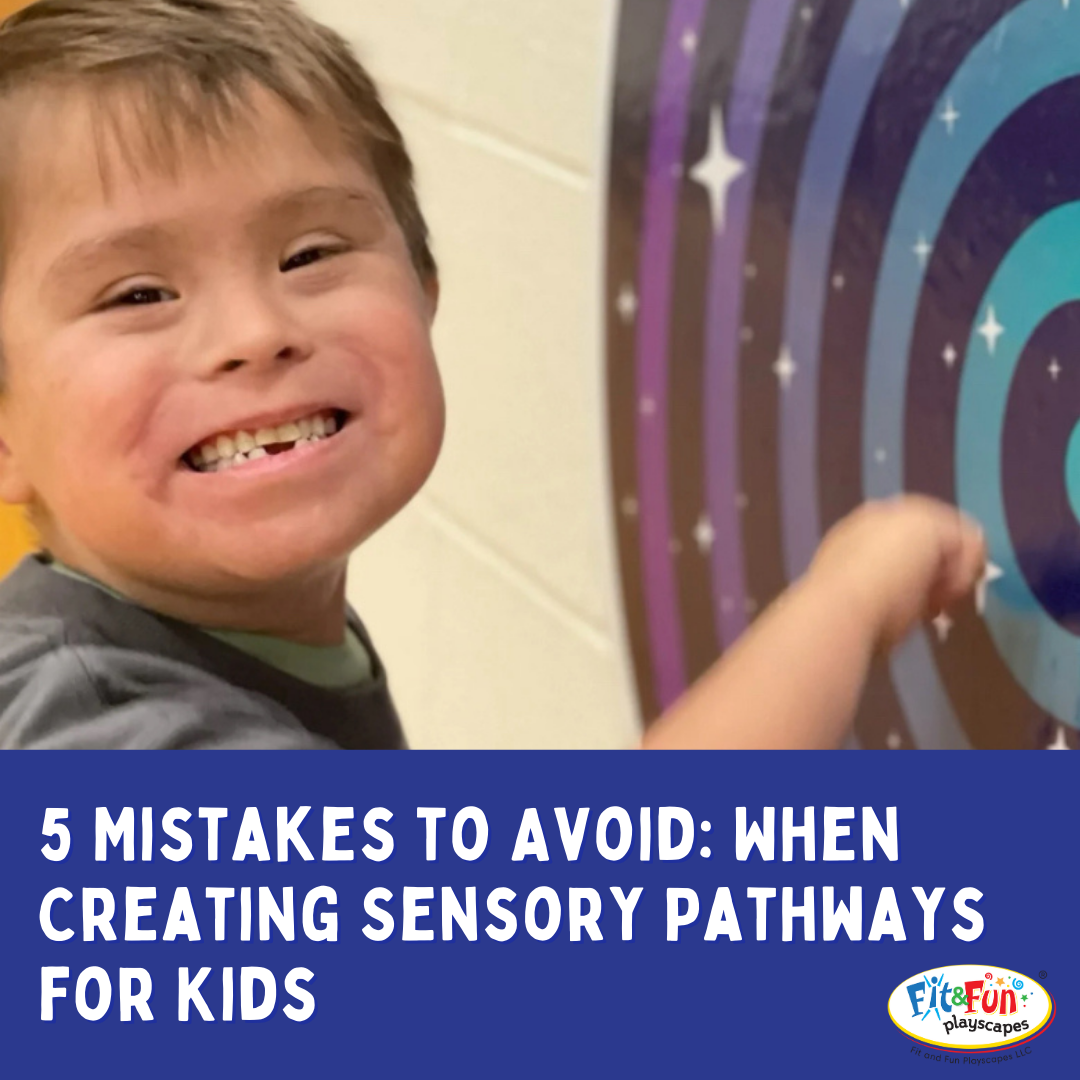SENSORY PATH RESOURCE CENTER
We’re pleased to provide you with our Sensory Path Resource Center, your source for all things sensory related! Here, we will answer questions like "What is a sensory path?", "What is sensory play?", "How can I update my sensory path?", and so much more! Learn about what a sensory path is and how your school, playground, or community can benefit from having sensory activities anywhere.
For over a decade now, we’ve helped thousands of schools and communities create indoor, outdoor and portable activities used for sensory pathways, sensory trails, sensory hallways, and sensory walks. All of our sensory products have been developed with special education teachers, adapted physical educators, occupational therapists, and/ or passionate parents.
Fit and Fun indoor sensory path decals, Super Stickers®, and outdoor sensory path stencil kits are 100% designed, made, and packaged in the USA. Learn more about the benefits of using high-quality 3M materials for the indoor sensory path and reusability of using our outdoor stencils and paints.
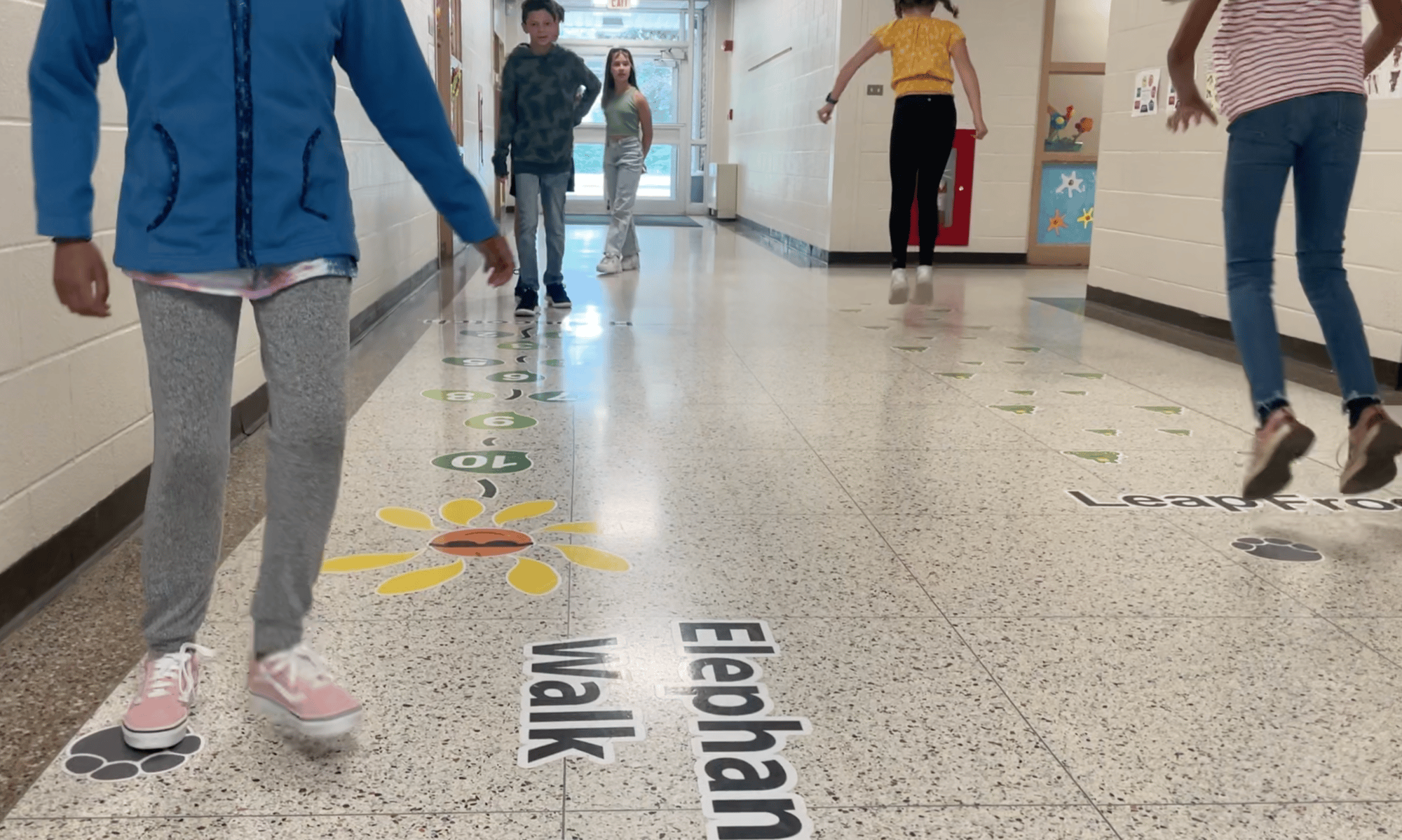
All About Sensory Paths
What is a sensory path?
What is sensory play?
Who created sensory paths?
Who can use a sensory path?
How can I update my sensory path?

Why are Sensory Paths Important?
Sensory paths and sensory play are a natural part of a child’s day. Children and students all over the world are being flooded with a variety of sensory stimuli across the host of different environments that they encounter each and every day. These experiences are part of a continuous series of "sensory pathways" that help them learn about their environment, what is expected of them, and how they are supposed to interact with the broader world around them.
How Can Fit & Fun Help?
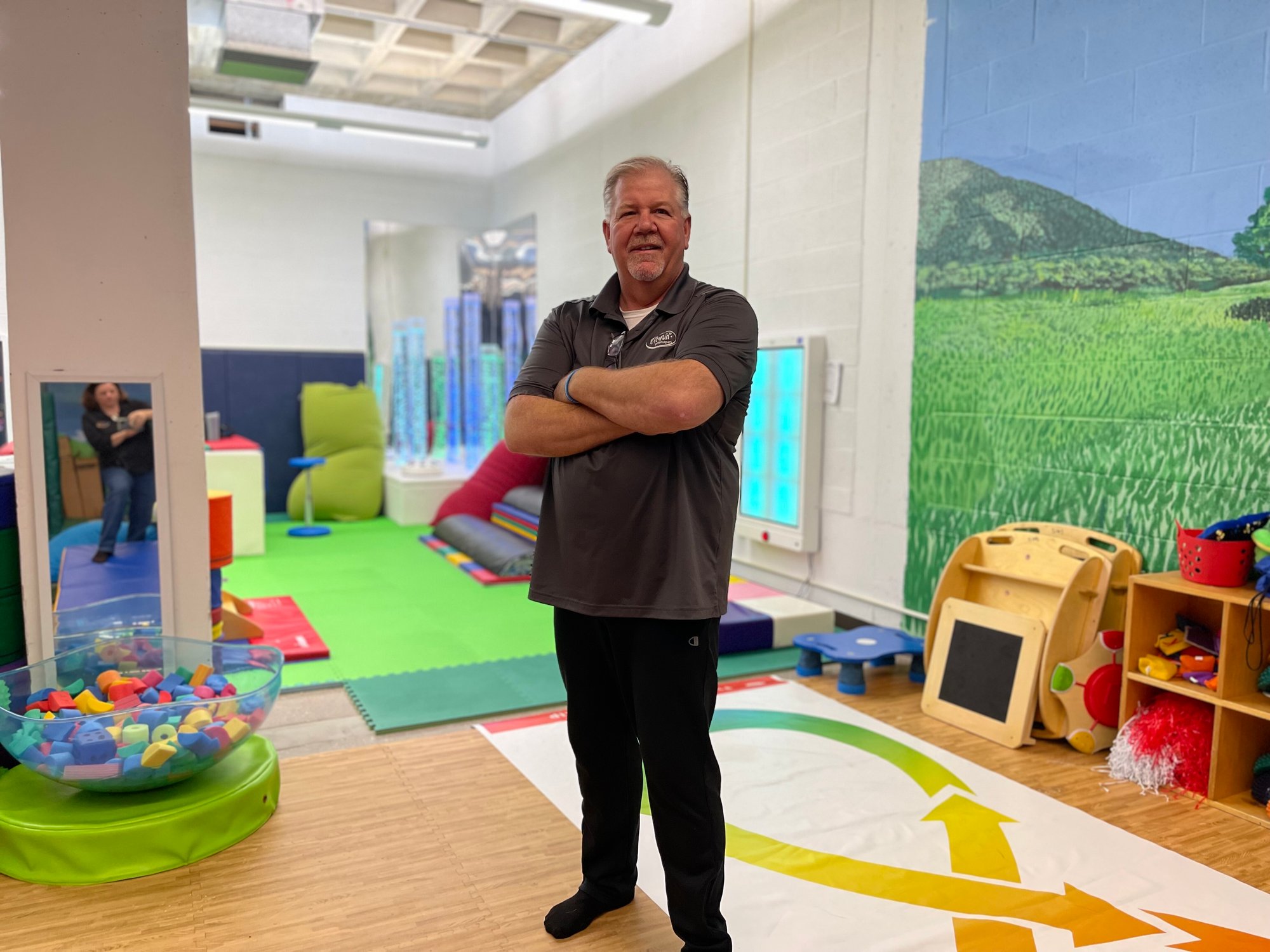
Expert Help & Resources
The below articles are written by Dr. Timothy D. Davis, CAPE, (Certified Adapted Physical Educator), Associate Professor, SUNY Cortland, Department of Physical Education, and Founder and Director of the Sensory Integration/Motor Sensory (SIMS) Movement Exploration Center at SUNY Cortland. Dr. Tim is also our senior educational consultant.
Understanding The Sensory System And The Importance Of “Sensory Pathways”
The Science Behind the Senses
Sensory Essentials: Vestibular/Tactical/Proprioception Senses
Difficulty with Self-Regulation and the Importance of Sensory Motor Skills
Providing Additional Sensory Motor Opportunities by Enhancing Sensory Pathway
Blogs About Sensory Paths & Rooms
Sensory Paths in Action
Explore Sensory Path Products
Free Sensory Path Advice
Are you considering providing a sensory experience for your students? Not sure how to create an impactful sensory path that addresses your students' needs? Learn the basic concepts, planning strategies and management tips from our founder Pamela Gunther (architect and planner) and Dr. Timothy Davis of SUNY Cortland's Dept of Physical Education, Sensory Integration Motor Sensory and Multi-Sensory Environment (SIMS/MSE) Lab.
Fit and Fun Playscapes is proud to be a 100% women-owned, WBENC-Certified WBE (Women's Business Enterprise) and WOSB (Women Owned Small Business) certified by the U.S. Small Business Administration (SBA), and eligible to participate in the Women-Owned Small Business Federal Contract Program (WOSB Program). In addition, we are certified by the Port Authority of New York & New Jersey.


